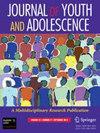Different Trajectories, Stable Links: Parental Worry and Child Internalizing Symptoms Over Time.
IF 3.6
1区 心理学
Q1 PSYCHOLOGY, DEVELOPMENTAL
引用次数: 0
Abstract
While research has investigated the relation between (general) parent anxiety and child mental health outcomes, parental worry specific to one's children has often been overlooked. Therefore, this study examines longitudinal dynamics between parental worry and child internalizing symptoms. Data are from waves 3-13 (2010-2020) of the German Family Panel (pairfam). Parental worry and child symptoms were reported by parents and children, respectively, every two years. The sample includes children ages 8-15 (Nboys = 667, Ngirls = 593) and their parents (Nfathers = 290, Nmothers = 646) living in Germany. Results show that initial levels of parental worry and child internalizing symptoms (ages 8-9) are related and remain stable over time, however, parent and child trajectories are not related. While children's symptoms tend to decrease, parental worry also decreases with little variation. The results do not provide evidence for bidirectional influences on each other's trajectories.不同的轨迹,稳定的联系:随着时间的推移,父母的担忧和孩子的内化症状。
虽然研究已经调查了(一般的)父母焦虑和孩子心理健康结果之间的关系,但父母对孩子的具体担忧往往被忽视。因此,本研究探讨父母忧虑与儿童内化症状之间的纵向动态关系。数据来自德国家庭面板(pairfam)的第3-13波(2010-2020)。父母和孩子每两年分别报告一次父母的担忧和孩子的症状。样本包括住在德国的8-15岁儿童(男孩= 667,女孩= 593)和他们的父母(父亲= 290,母亲= 646)。结果表明,父母焦虑的初始水平与儿童内化症状(8-9岁)相关,并且随着时间的推移保持稳定,然而,父母和儿童的轨迹不相关。当孩子的症状趋于减轻时,父母的担忧也几乎没有变化。这些结果并没有提供证据证明它们的轨迹之间存在双向影响。
本文章由计算机程序翻译,如有差异,请以英文原文为准。
求助全文
约1分钟内获得全文
求助全文
来源期刊

Journal of Youth and Adolescence
PSYCHOLOGY, DEVELOPMENTAL-
CiteScore
8.20
自引率
6.10%
发文量
155
期刊介绍:
Journal of Youth and Adolescence provides a single, high-level medium of communication for psychologists, psychiatrists, biologists, criminologists, educators, and researchers in many other allied disciplines who address the subject of youth and adolescence. The journal publishes quantitative analyses, theoretical papers, and comprehensive review articles. The journal especially welcomes empirically rigorous papers that take policy implications seriously. Research need not have been designed to address policy needs, but manuscripts must address implications for the manner society formally (e.g., through laws, policies or regulations) or informally (e.g., through parents, peers, and social institutions) responds to the period of youth and adolescence.
 求助内容:
求助内容: 应助结果提醒方式:
应助结果提醒方式:


